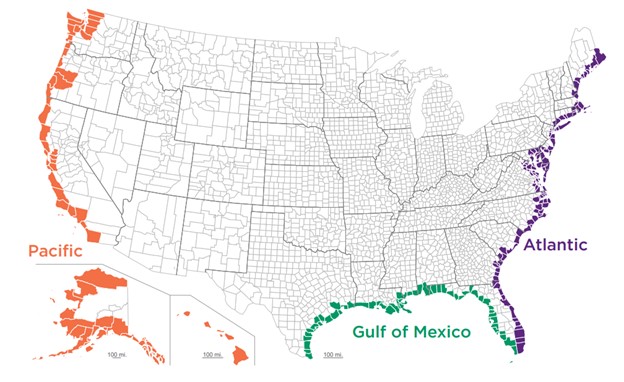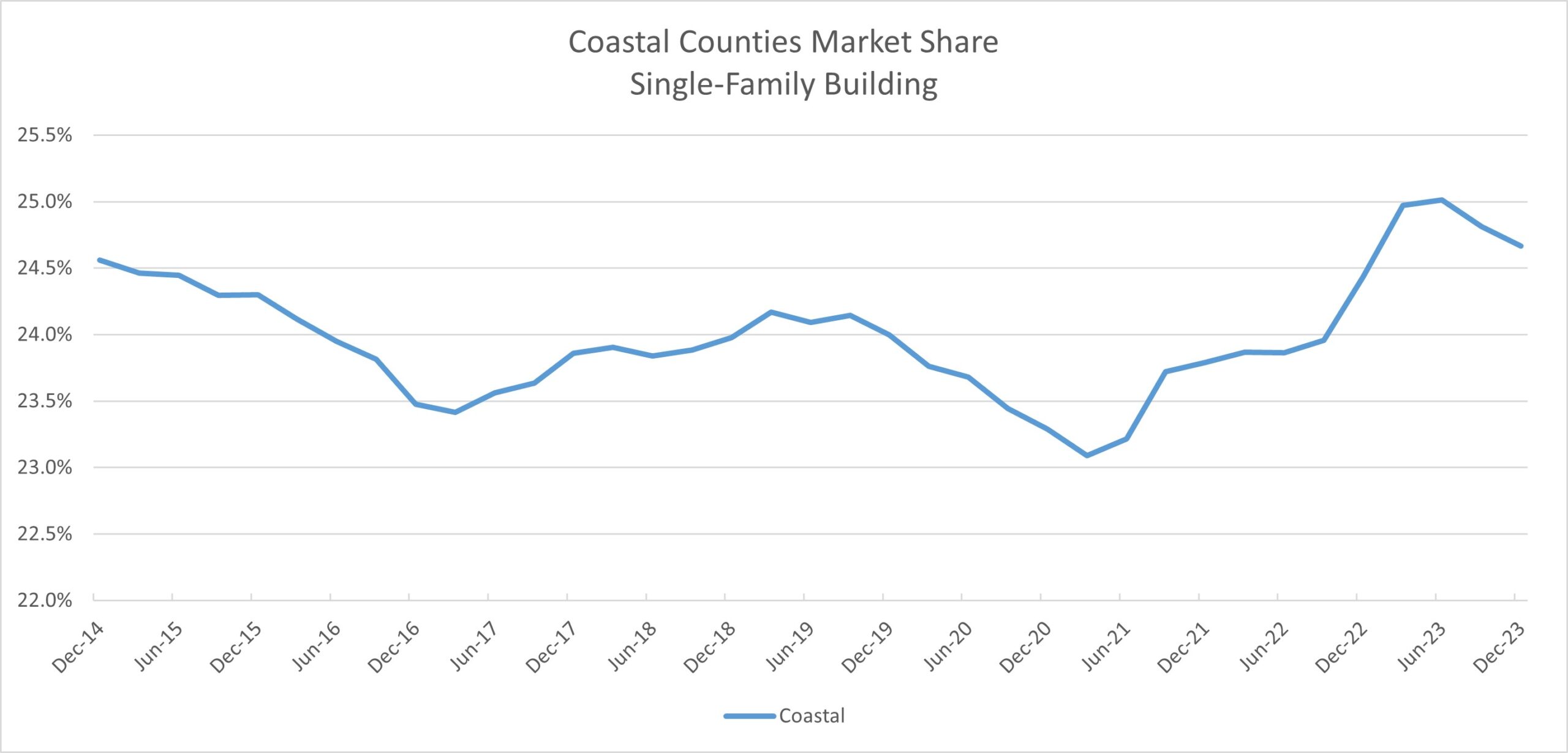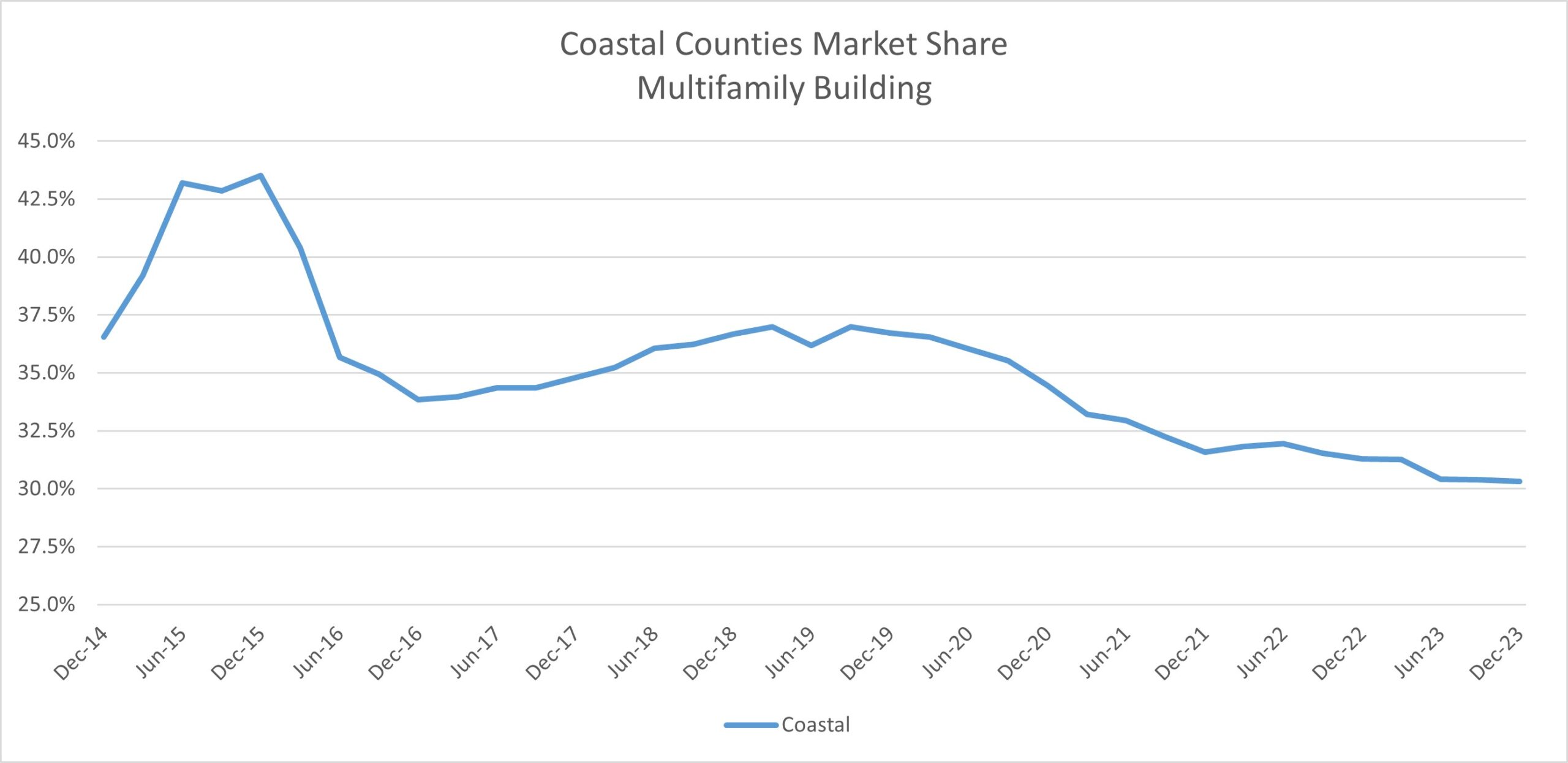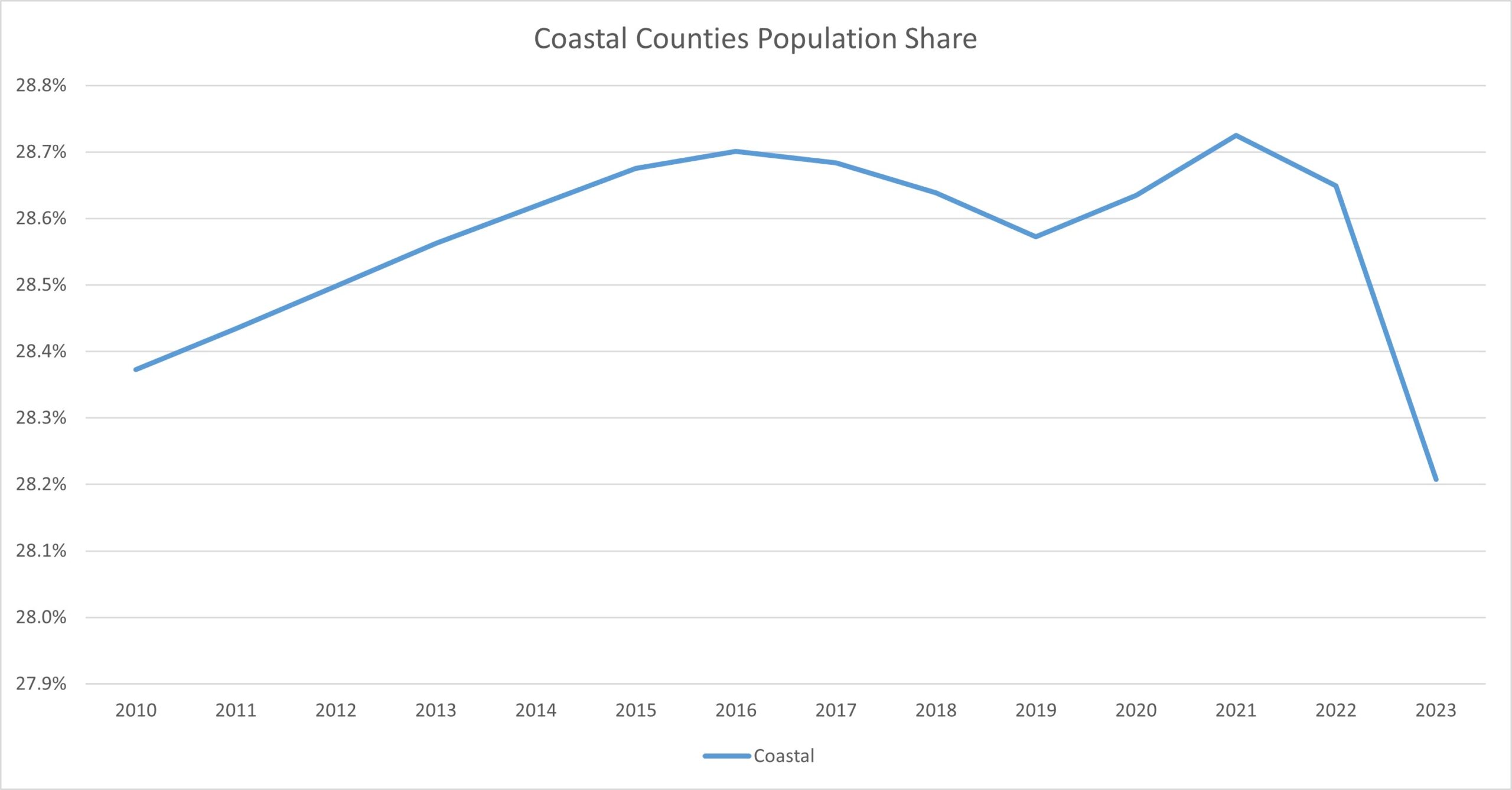As part of the recently published HBGI, new NAHB analysis of residential permit data shows that about a quarter of single-family construction takes place in coastal counties.
Coastal counties, as defined by U.S. Census Bureau, are counties that are adjacent to coastal water or a territorial sea. These coastal counties are grouped into three regions: the Atlantic, Gulf of Mexico, and Pacific.

The four-quarter moving average market share (shown below) for single-family construction in coastal counties has marginally changed over the past nine years. The lowest market share occurred in the first quarter of 2021 at 23.09% of the market. After this minimum, the share rose to a peak of 25.01% in the second quarter of 2023.

For the multifamily market, construction in coastal areas has been trending downward over the past nine years. The four-quarter moving average peaked during this period in the fourth quarter of 2015 at 43.51%. The share remained relatively level around 35% until 2021 when it began to descend. The current market share for coastal areas in the multifamily construction is 30.32%.

While the coastal market share of multifamily construction has been falling recently, it has historically held a larger share compared to single-family coastal construction. Census estimates reveal that the seven densest populated counties (population per square mile) in the U.S. are coastal counties. Higher population density makes it difficult to construct single-family housing due to limited space availability, making multifamily construction the more economical option. Due to the population density of multiple coastal counties, demand for multifamily construction in coastal counties has been continually higher than that of single-family building.
Additionally, the annual population share of coastal counties has remained relatively consistent at 28% of the total U.S. population. This share was at 28.72% in 2021 but has fallen very slightly over the past two years to 28.21% in 2023.


